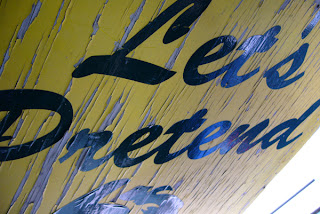 Disconcerting is the best description for the exhibition I attended today at Te Tohi Gallery, Pakuranga (NZ). The Gallery is hosting an international exhibition entitled 'True Stories, Scripted Realities': five video installations playing with the themes of authenticity, truth, fiction and reality. Of them all, I found Omer Fast's work, 'The Casting', as the most startling. Two double-sided screens are suspended in the middle of the gallery space projecting on both sides. On one side, the artist is visible on one screen, with his interview subject, an Army Sergeant on the other. On the other side an is the uncanny projection of 'actors' silently, and in semi-still life, acting out the narrative elements of the interview with the soldier. In my opinion, the resulting installation is a multi-layered attack on the audiences assumptions about authentic narrative, memory and 'true accounts'.
Disconcerting is the best description for the exhibition I attended today at Te Tohi Gallery, Pakuranga (NZ). The Gallery is hosting an international exhibition entitled 'True Stories, Scripted Realities': five video installations playing with the themes of authenticity, truth, fiction and reality. Of them all, I found Omer Fast's work, 'The Casting', as the most startling. Two double-sided screens are suspended in the middle of the gallery space projecting on both sides. On one side, the artist is visible on one screen, with his interview subject, an Army Sergeant on the other. On the other side an is the uncanny projection of 'actors' silently, and in semi-still life, acting out the narrative elements of the interview with the soldier. In my opinion, the resulting installation is a multi-layered attack on the audiences assumptions about authentic narrative, memory and 'true accounts'.The interview with the soldier edits together two different key events, one is his accidental murder of a civilian in a war-zone, the other is his intense and awkward encounter with a troubled self-harming woman. At any given minute the actors on the opposing screen are either creating different tableaux of interactions in a desert war, or working through male-female relationships in suburban Germany. As you watch these scenes are interspersed with images from a film-studio.
The juxtaposition of the 'real' being recreated with the 'making-of' background of a film set with actors/directors forces the viewer to listen more closely to the interview taking place on the other side. In fact, several times I had to get up and switch to see the supposedly 'authentic' interview taking place in order to reorient myself in time. I believe that when we are forced to confront our schema for making sense of the world our critical reflective capacity is strengthened. The complicated web of audio and visual narratives and layers of relationship with the story (supposedly authentic interview; scene 're-enactment', supposed footage of audition for the role or the 'making of' background shots) confront us with the barrier we face as discerning audience members when encountering 'documentary' works and the fourth wall. The real time motion of the interview juxtaposed with posed actors (not frozen as a special effect), is uncanny.
The whole installation was augmented, on a Sunday morning, by the very loud Pacifica church service occurring next door. Surreal. Perhaps looking at True Stories and Scripted Realities and how that has played out in different religious contexts was an unintended addition of the gallery.
No comments:
Post a Comment